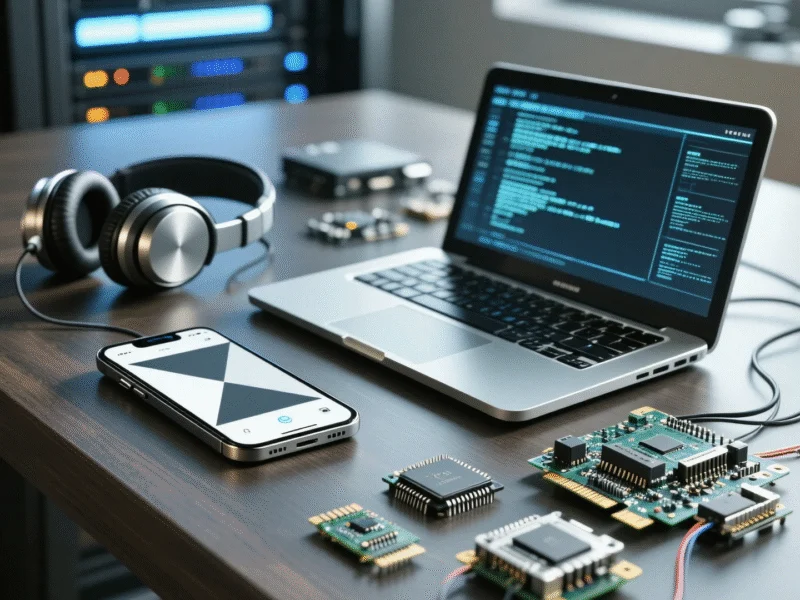Title: The Rise of AI “Supercomputers” for Developers—Not Your Average PC User
You can now buy a super expensive AI-first PC, but do you really want to? The buzz around AI “supercomputers” is growing, but as industry reports highlight, these devices aren’t designed for everyday consumers. No, your new “AI PC” or “Copilot+ PC” isn’t great at running AI—at least, not with any amount of compute that matters. The real artificial intelligence processing happens behind the closed doors of sprawling data centers springing up across the United States. Nvidia, which became a trillion-dollar company thanks to AI, is now encouraging users to bring a fraction of that cloud power to their desks.
Nvidia first announced its $4,000 DGX Spark AI compute machine, initially dubbed “Project Digits,” during CES 2025. While CEO Jensen Huang emphasized the AI and graphics capabilities of the RTX 50-series GPUs, Spark was marketed elsewhere as an at-home device for high-end AI workloads. The company even labeled it a “new class of computer,” despite its reliance on the Blackwell chip architecture found in other Nvidia products. This move aligns with a broader trend where technology shifts are reshaping hardware demands, pushing beyond traditional consumer boundaries.
What Is the DGX Spark and Who Is It For?
The DGX Spark is set to start shipping soon, with partners like Acer, Asus, Lenovo, MSI, Dell, and Gigabyte ready to release their own versions. Unlike typical PCs, it won’t be found on Best Buy shelves; instead, Nvidia plans to distribute it through Micro Center stores in the U.S. The company has made a splash by providing units to major firms like OpenAI and Microsoft, as well as Elon Musk at Starbase headquarters, fueling speculation about its role in developing AI-driven projects like a “Wokipedia” competitor aimed at helping people “understand the universe.”
At IFA 2025, Nvidia and Acer showcased Spark units resembling shiny mini-PCs, but they weren’t running Windows. Instead, Spark operates on a customized, Ubuntu-based Linux distribution pre-loaded with Nvidia’s AI tools for tasks like image models and large language models (LLMs). Under the hood, it features a 20-core, ARM-based CPU paired with a Grace Blackwell GPU. While its core count matches Nvidia’s lower-end GeForce RTX 5070, the Spark’s true strength lies in its specialized AI capabilities.
Specs and Performance: Why It Stands Out
On the surface, the Spark’s specs might not scream “supercomputer,” but its internals pack a punch. Weighing 2.65 pounds, it includes 128GB of system memory and 4TB of storage. The Blackwell chip delivers 1 petaflop of AI compute performance—significantly more than the 170 teraflops offered by Nvidia’s 2016 DGX-1. Though flops are a rough metric for GPU speed, this represents a massive leap in efficiency, especially with the Spark running at just 240W compared to the older model’s 3,200W power draw.
For a clearer picture of AI compute capability, the DGX Spark promises around 1,000 TOPS (trillions of operations per second). While this falls short of the RTX 5090’s 3,352 TOPS, it surpasses any similarly sized PC and excels in memory-intensive tasks like developing next-gen chatbots. In contrast, Qualcomm’s upcoming Snapdragon X2 Elite Extreme chip, with its redesigned neural processing unit, only reaches 70 TOPS. This gap underscores how advancements in specialized hardware are leaving conventional PCs behind, limiting them to low-end AI models or background tasks.
Market Context and Strategic Implications
Priced at around $4,000, the DGX Spark isn’t targeting the average user looking to run features like Windows 11 Recall. Instead, it’s aimed at nascent AI developers, students, or affluent enthusiasts who can afford to invest in cutting-edge tools. Nvidia’s goal is to foster a new wave of AI applications that people genuinely want to use—what Huang calls “the next wave of breakthroughs.” This strategy mirrors trends in other sectors, such as how companies are leveraging innovation to drive growth and market excitement.
Beyond chatbots, the hope is that tools like Spark will inspire practical AI solutions—perhaps moving beyond gimmicks to address real-world issues. As investment patterns show, there’s growing interest in technologies that offer tangible benefits, whether in productivity or daily life. The DGX Spark represents a step toward democratizing high-end AI development, but it remains a niche product for those with the resources and expertise to harness its power.
Conclusion: A Glimpse into the Future of AI Computing
The DGX Spark and similar devices highlight a widening divide between consumer-grade AI PCs and professional AI workstations. While everyday users may never need this level of performance, its existence accelerates innovation, pushing the boundaries of what’s possible in artificial intelligence. As these “supercomputers” become more accessible to developers, we can expect a surge in creative applications that could eventually trickle down to mainstream technology, transforming how we interact with AI in the years to come.



